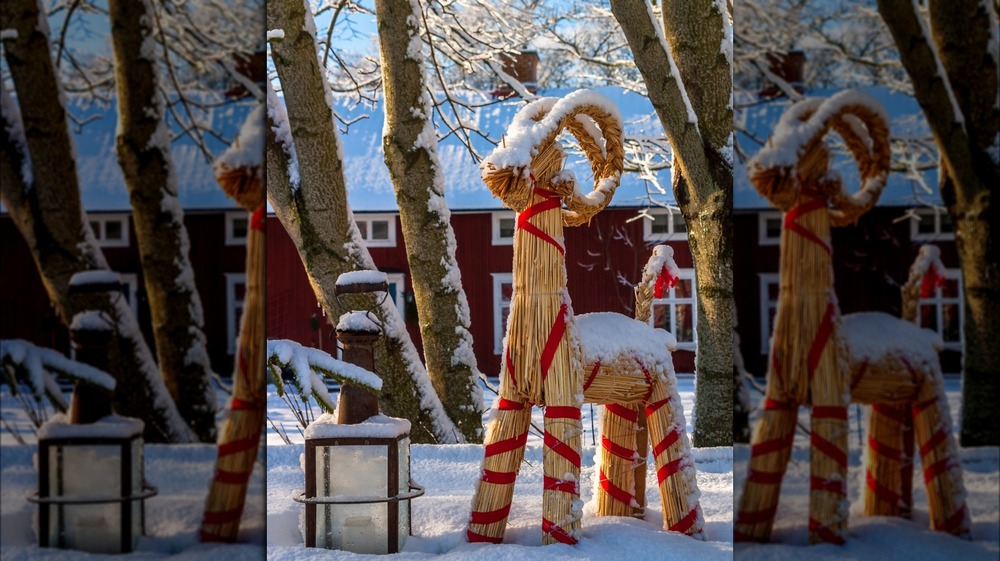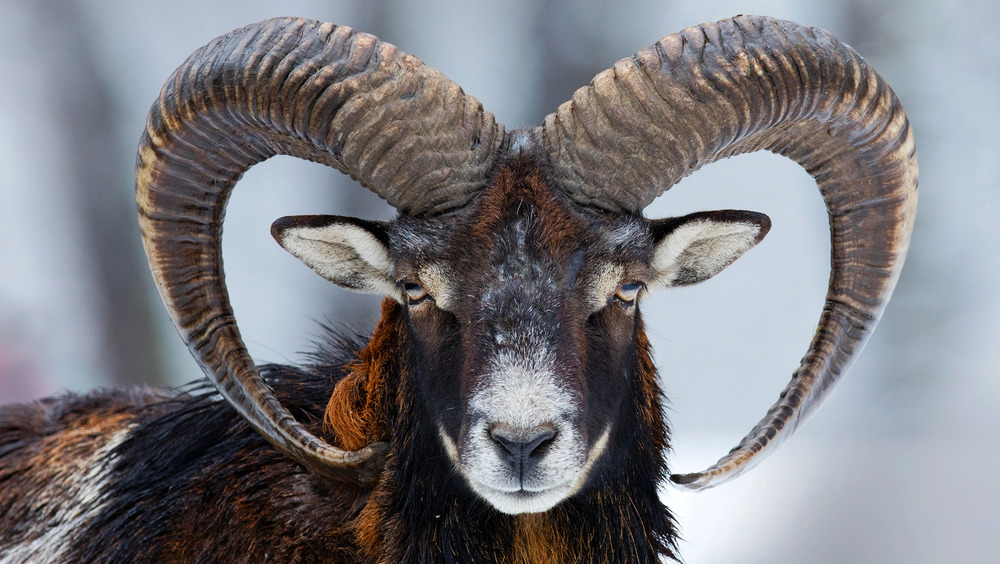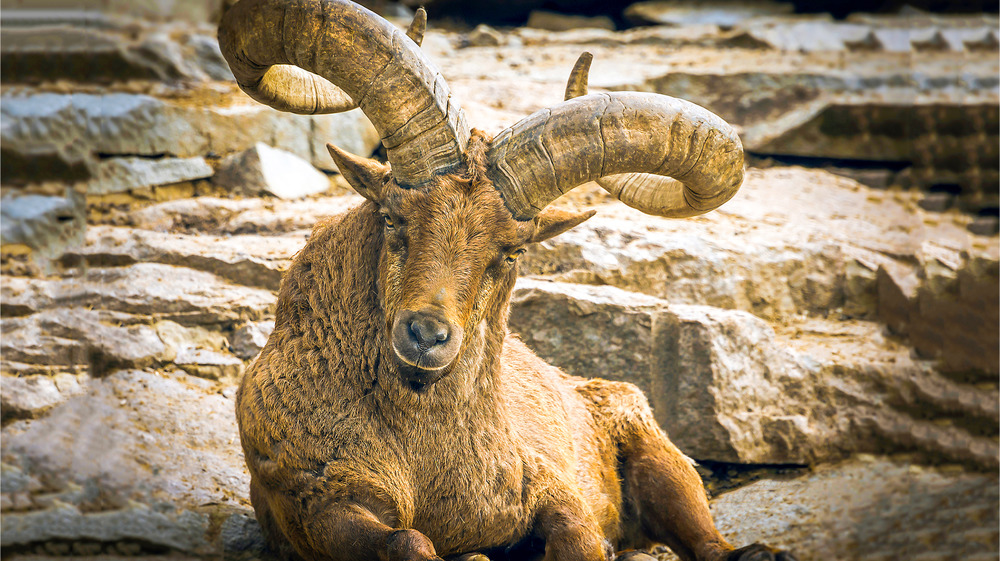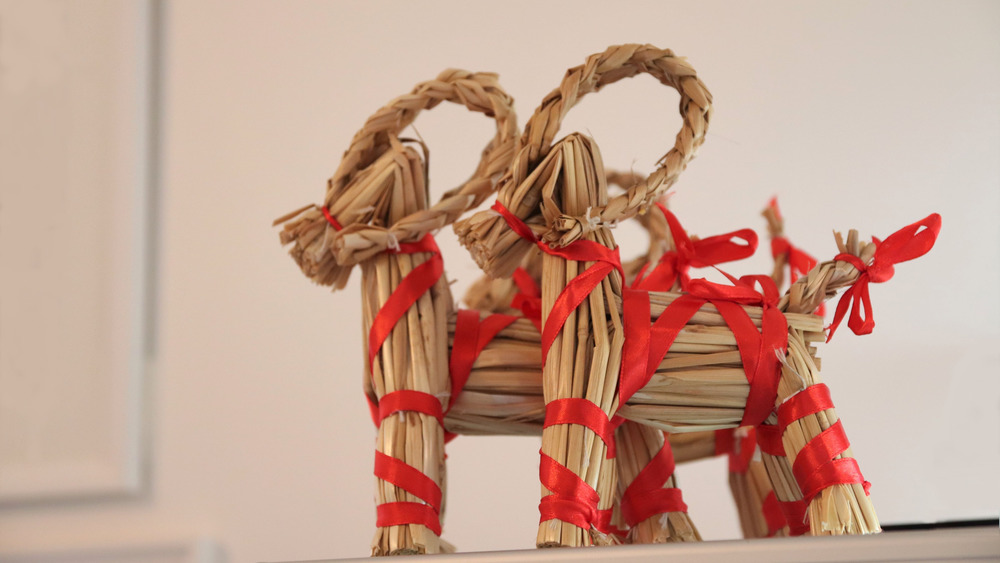The Legend Of The Yule Goat
Christmas stories and symbolism permeate our culture for one winter month every year. Sometimes in July, too, for reasons that elude us. We're all familiar with them. The benevolent Santa Claus with his lavish white beard, bright red suit, and rosy cheeks, flying his sleigh with a bag full of gifts behind him. For one night and one night only, Santa and his reindeer leave the North Pole, wave goodbye to Mrs. Claus and the elves, and deliver presents to hopeful children around the globe. It's one of the most well-known Christmas legends. The story bleeds Yuletide cheer, joy, and goodwill towards men, but it's not the only Christmas story out there.
The Christmas holiday is an inherently religious one. Its connection to the Christian nativity story is probably the most famous example, but, in actuality, the holiday also has connections with ancient pagan solstice celebrations like Yule.
The alternative religious tales paint different pictures of Christmas than what most of us in the United States are used to. Just look at mid-Europe's Krampus and the way he punishes naughty children. Now, most other myths are a little more benign that Krampus and his habit of kidnapping children, but that doesn't make them any less interesting. Some of these myths are more celebrated than the Santa stories we know and love. The Scandinavian legend of the Yule Goat is one of those myths.
Who needs reindeer?
Long before Santa Claus took to the skies with his team of reindeer, there was the Yule Goat, also called Julbock. To be fair, Santa's reindeer are fairly new in the scheme of things, appearing for the first time in the 1823 Clement Clarke Moore poem "A Visit from St. Nicholas" — you probably know it as "'Twas the Night Before Christmas" – according to The Durango Herald.
The Julbock myths mirror many of today's Christmas legends. The Yule Goat has powers similar to those of Santa's reindeer, according to CBC. The goat can fly, and it often carries Santa on his yearly journey to deliver his sack of goodies around the world. In older, more traditional legends, as Storey explains, Julbock did the deliveries all by itself, going from home to home while handing out small gifts to every family it visited. This story slowly changed over time to involve gnomes or elf-like creatures riding the Julbock's back because, apparently, goats can't be trusted with simple tasks like delivering presents worldwide. It wasn't much of a leap for this version of the Yule Goat to become synonymous with Santa's bridled reindeer.
Remnants of the Yule Goat legends have been kept alive in Scandinavia. Goat decorations, typically fashioned out of straw and red ribbons, can be found around Christmas time in countries such as Norway, Sweden, and Finland, celebrating this benevolent Christmas creature. But here's the thing: the Julbock symbolism wasn't always so lighthearted.
Older Julbock celebrations
The origins of the Yule Goat aren't the clearest, but historians believe, according to The Durango Herald, that Julbock stems from Norse mythology, particularly the stories of Thor. Thor had two mystical goats of his own, and much like in the Santa Claus stories, these goats drew the god of thunder's chariot through the sky. Thor, in legend, was a food provider for the gods, and sometimes his catering included his favorite goats. The god would slaughter and cook his goats, preserving the bones so they could regenerate the following morning.
Older Julbock celebrations in Sweden, as Storey tells us, celebrated the sacrifice and rebirth Thor's goats went through on the regular. During the ancient Yule sacrifice festival of Juleoffer, a person would dress up in goat skins and carry a figure of a goat (usually one of Thor's) while they walked to a symbolic slaughter. Of course, a symbolic resurrection followed the slaughter as a way of paying homage to the death and rebirth of the Sun, which is basically what Yule is all about, what with it being on the Winter Solstice and all.
At some point, the Christians discovered this ancient pagan celebration and were far from happy about it. By the 17th century, the church had declared Julbrock a demon and spread tales of this evil goat harassing Christians throughout Sweden.
Modern Yule Goat celebrations
People in more modern times still dress up as the Yule Goat, but they don't go through any of the pagan sacrifice stuff. Instead, according to Storey, children in Norway will dress up as Julbock and go caroling door-to-door while people give them treats, sort of like Christmas trick-or-treat.
Remember those straw Yule Goat decorations we talked about? Well, Gävle, Sweden, takes those effigies to a whole new level. Every year coming up on the Christmas season, the town erects a gigantic straw Julbock that towers more than 40 feet tall. It's seriously a spectacle to behold. You'd think with something as neat as a towering goat, people would want to look at it in awe instead of with vandalistic intent, but no. The people of Gävle build it out of straw, and do you know what straw does? It burns.
According to National Geographic, the burning of the Gävle goat is almost as popular of a Yuletide tradition as building the thing. Nearly 50 percent of the effigies built since 1966 have been destroyed. Now, people around the world wait to see if the goat survives. The burning of the goat has become so popular, in fact, that British gambling houses take bets on the Gävle goat's survival, according to Nordstjernan. With cameras in place as an added security measure, anyone can watch the Gävle goat online to see if it's burning. Who knows? Maybe it'll survive this year.



